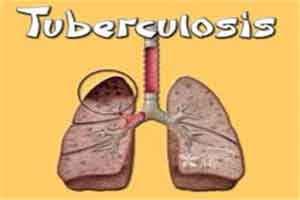- Home
- Editorial
- News
- Practice Guidelines
- Anesthesiology Guidelines
- Cancer Guidelines
- Cardiac Sciences Guidelines
- Critical Care Guidelines
- Dentistry Guidelines
- Dermatology Guidelines
- Diabetes and Endo Guidelines
- Diagnostics Guidelines
- ENT Guidelines
- Featured Practice Guidelines
- Gastroenterology Guidelines
- Geriatrics Guidelines
- Medicine Guidelines
- Nephrology Guidelines
- Neurosciences Guidelines
- Obs and Gynae Guidelines
- Ophthalmology Guidelines
- Orthopaedics Guidelines
- Paediatrics Guidelines
- Psychiatry Guidelines
- Pulmonology Guidelines
- Radiology Guidelines
- Surgery Guidelines
- Urology Guidelines
Clinical trial supports shorter regimen for multidrug-resistant TB: NEJM

A Clinical trial, STREAM Trial has released data that supports a shorter regimen for multidrug-resistant TB.
The WHO guidelines of 2011 have recommended a long drug regimen of 20 months for the treatment of patients with multidrug-resistant tuberculosis (MDR-TB). However, a recent study published in the New England Journal of Medicine has found that a shorter regimen of 9 to 11 months works equally well as the longer regimen in MDR-TB patients.
These are the results of the first stage of the phase 3 STREAM (Standard Treatment Regimen of Anti-Tuberculosis Drugs for Patients with MDR-TB). It showed that in patients with rifampin-resistant TB susceptible to fluoroquinolones and aminoglycosides, a shorter treatment regimen was noninferior to the standard regimen, producing a favorable outcome in 79% of participants while the longer treatment was found to be effective in 80% of the patients.
The shorter regimen tested in the STREAM trial consisted of high-dose moxifloxacin, clofazimine, ethambutol, and pyrazinamide over 40 weeks, supplemented by kanamycin, isoniazid, and prothionamide during the first 16 weeks of treatment.
Previous studies cohort studies in Bangladesh showed promising cure rates among patients with multidrug-resistant tuberculosis who received existing drugs in regimens shorter than that recommended by the WHO in 2011. Andrew Nunn, a senior scientist, and professor of epidemiology at University College London, and colleagues enrolled and screened 689 participants from Ethiopia, Mongolia, South Africa, and Vietnam from July 2012 through June 2015. Of these patients, 424 underwent randomization on a 2:1 basis, with 282 assigned to the short regimen and 142 to the long regimen. The modified intention-to-treat group included 389 patients, of whom 369 were included in the modified intention-to-treat efficacy analysis.
The primary efficacy outcome was a favorable status at 132 weeks, defined by cultures negative for Mycobacterium tuberculosis at 132 weeks and at a previous occasion, with no intervening positive culture or previous unfavorable outcome. The noninferiority margin was 10 percentage points.
Key Findings:
- Favorable status was attained by 78.8% of patients (193 of 245) in the short-regimen group and 79.8% of patients (99 of 124) in the long-regimen group.
- With adjustment for HIV status, the difference was 1 percentage point.
- The noninferiority results were consistent in the per-protocol population, with 81.9% of patients (186 of 227) in the short-regimen group achieving favorable status compared with 80.7% of patients (63 of 87) in the long-regimen group.
- The noninferiority results were consistent in the per-protocol population, with 81.9% of patients (186 of 227) in the short-regimen group achieving favorable status compared with 80.7% of patients (63 of 87) in the long-regimen group.
- The comparison of safety outcomes found that an adverse event of grade 3 or higher occurred in 48.2% of patients (136 of 282) treated with the short regimen and 45.4% of patients (64 of 141) on the long regimen.
- Electrocardiogram readings showed that more patients in the short-regimen arm experienced prolongation of the QT interval (11% vs. 6.4% in the long-regimen arm), a syndrome that causes irregular heart rhythms. As a result, some of those patients received medication adjustments.
- The comparison of safety outcomes found that an adverse event of grade 3 or higher occurred in 48.2% of patients (136 of 282) treated with the short regimen and 45.4% of patients (64 of 141) on the long regimen.
- In addition, electrocardiogram readings showed that more patients in the short-regimen arm experienced prolongation of the QT interval (11% vs. 6.4% in the long-regimen arm), a syndrome that causes irregular heart rhythms. As a result, some of those patients received medication adjustments.
- There were also more deaths among short-regimen patients, liver and ear disorders, and more acquired resistance to fluoroquinolones and aminoglycosides compared with patients on the long regimen, although the differences were not considered statistically significant.
The results hold significance ad for some MDR-TB patients, the treatment now could be significantly cheaper and shorter. The length and costs of the standard MDR-TB treatment, along with the side effects associated with some of the second-line antibiotics, are among the reasons that the treatment success rate for MDR-TB is only 54%.
Shorter regimens could help improve the poor success rate for MDR-TB treatment, which is significantly lower than the 82% success rate for patients with susceptible TB and is hindering global efforts to tackle the disease.
A second stage of the STREAM trial is currently evaluating whether a fully oral version of the short regimen—which would avoid the toxic effects associated with kanamycin—is as effective as the longer regimen.
For further reference log on to 10.1056/NEJMoa1811867

Disclaimer: This site is primarily intended for healthcare professionals. Any content/information on this website does not replace the advice of medical and/or health professionals and should not be construed as medical/diagnostic advice/endorsement or prescription. Use of this site is subject to our terms of use, privacy policy, advertisement policy. © 2020 Minerva Medical Treatment Pvt Ltd